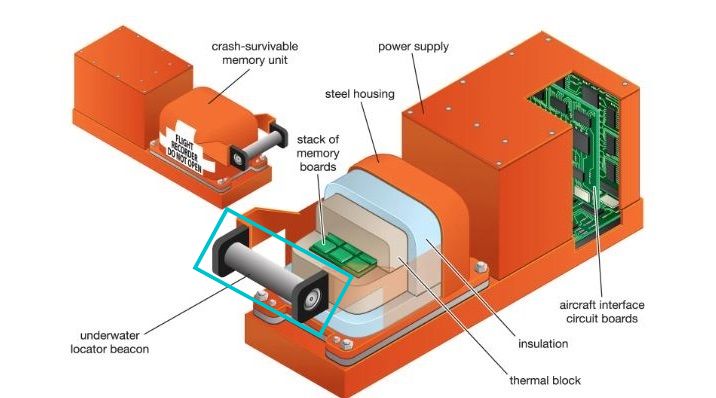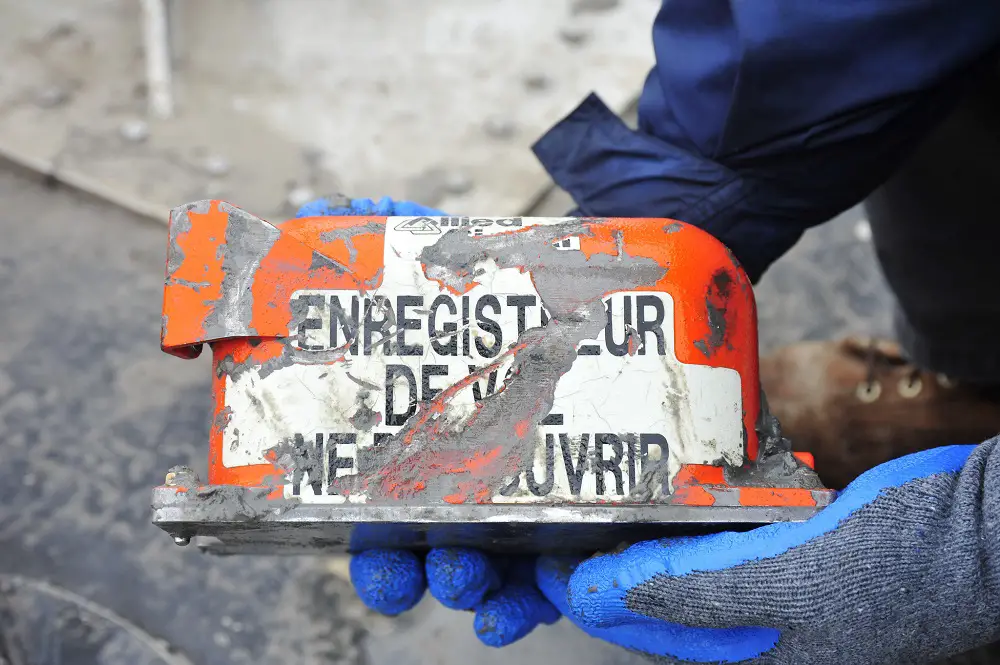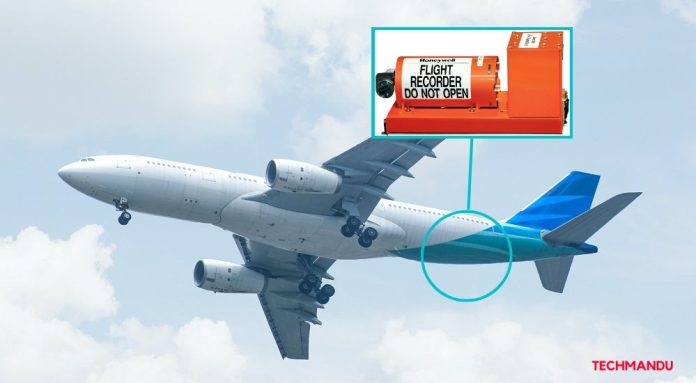An airplane black box is a flight data recorder, the most sought-after device after a mishap. However, not many are aware of what it does and how it works. It records all the communication that takes place in a cockpit and does more than just that. So it’s vital for authorities during an investigation, just like for the Yeti Plane crash in Pokhara. And ironically, its color is orange, not black. In this post, we discuss all the premises with details about the black box.
Table of Contents
What’s an airplane black box and what it does | All details
A black box or a flight data recorder records all the voice data in an airplane and records other environmental factors that influence a plane. It’s the device’s intended duty, and it does so duly, even surviving through the worst of the crashes. Find out all about it from its color, its survivability, location, weight, functions, and more below.
How did it start?
In 1954 AD, Dr. David Warrant conjured an idea of a device that would record all flight data, voice, and other details in the cockpit of a plane just before the crash.
Its prototype was built in the 1950s and was gradually adopted in aviation. Now, a black box is found in aircraft everywhere in the world.
Its color is orange, not black
Despite being called black boxes, they actually are painted orange and have a reflective tape attached to their exteriors. The reason is obvious- to help researchers easily locate them from the debris of a crash. But why “black” then? There are some theories; some believe it is because black boxes were painted black in their early days, and others believe it is because of the charring they get from the flames following an accident.
Check out: CAAN Installing Weather Cameras to Minimize Flight Mishaps
It’s a combination of two devices
A black box has two devices- the flight data recorder (FDR) and the cockpit voice recorder (CVR), and both are integrated into one unit in an airplane. FDR records data such as altitude, acceleration, pitch, and internal conditions.
CVR, on the other hand, records verbal communication that takes place among the crew members inside the cockpit and voice transmission by radio.
Where is it kept?
A black box is kept in the tail of an aircraft to minimize it to the least impact in the event of a crash. The objective is to keep it as safe as possible, as it is the single most important device to get flight data after an unfortunate mishap. It can resist even a temperature of 11000 Celsius.
The airplane black box works even underwater
Commercial planes’ black boxes can stay functional underwater and send signals. They send a signal as soon as they touch water to help authorities locate them. So normally, investigators won’t have a hard time finding them even if they are submerged in the water.

Do read: World’s First Electric Plane Alice Takes Off, 250 Miles Range
How do investigators use a black box?
After finding the black box of a plane after a crash, investigators take it to a lab and download the data from the recorders inside. They then work out how the crash might have taken place. The FDR can also be played on the recorder after connecting it to a readout system.

The complete reading and analysis might take weeks to months for the investigators. The data can also be exported through USB ports. If recorders have incurred some damage, then memory boards on them are removed, and a new memory is installed and connected to a functional recorder to get it to work.
To read the CVR, an expert team is brought in. Often, the team comprises airline representatives, specialists, and others. They interpret words and sounds recorded by the CVR.
Find out: CAAN to Build Three Advanced Terminals at Airports in Terai
In summary: The list of data an airplane black box records
An airplane black box records far more than just the cockpit voice. The altitude of the aircraft, its elevation, fuel flow, time of communication, and more are recorded by the sturdily designed device. Find the list of what an airplane black box records below.
- Time
- Pressure altitude
- Airspeed
- Vertical acceleration
- Fuel flow
- Horizontal stabilizer
- Control-column position
- Rudder-pedal position
- Control-wheel position, and more.
Must read: How to Check the Flight Status of Nepali Airlines, Find Here
If you want to add more input to the post, let us know in the comments below.



